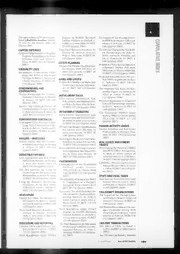
Preview Deciding absorption in relational structures
Deciding absorption in relational structures 6 1 0 2 Libor Barto Jakub Bul´ın n a J Both authors were supported by the Grant Agency of the Czech Re- 4 2 public, grant 13-01832S. The second author was also supported by the Polish National Science Centre (NCN) grant 2011/01/B/ST6/01006. ] A Abstract R . Weprovethatforfinite, finitelyrelated algebrastheconcepts ofan h t absorbing subuniverse and a Jo´nsson absorbing subuniverse coincide. a Consequently, it is decidable whether a given subset is an absorbing m subuniverse of the polymorphism algebra of a given relational struc- [ ture. 1 v 0 1 Introduction 5 4 6 A finite algebra A is called finitely related if its clone of term operations 0 . is equal to the polymorphism clone of some relational structure with finite 1 0 signature. In [2] it was proved that every finite, finitely related algebra 6 with J´onsson terms has a near unanimity term; consequently, it is decidable 1 : whether a given relational structure has a near unanimity polymorphism. In v i the present paper, we generalize this result and its consequence. A partial X result in the same direction already appeared in [13]. r a Absorption (J´onsson absorption, respectively) generalizes near unanimity operations (J´onsson operations) in the following way. A subuniverse B or a subalgebra B of an algebra A is absorbing, written BEA, if A has an idempotent term t (an absorption term) such that t(B,B,...,B,A,B,...,B) ⊆ B Department of Algebra, Faculty of Mathematics and Physics, Charles University in Prague, Sokolovska´83, 18675 Prague 8, Czech Republic;e-mail: libor.barto@gmail.com Department of Mathematics, University of Colorado Boulder, Boulder, Colorado 80309-0395,USA; e-mail: jakub.bulin@gmail.com 1 2 Libor Barto, Jakub Bul´ın for every position of A. We also say that B absorbs A, that t witnesses the absorption BEA, etc. A subuniverse B is called J´onsson absorbing, written BE A, if A has J a sequence of (necessarily idempotent) terms d , d , ..., d (a J´onsson ab- 0 1 n sorption chain) such that d (B,A,B) ⊆ B for all i ≤ n, i d (x,y,y) ≈ d (x,x,y) for all i < n, i i+1 d (x,y,z) ≈ x, and d (x,y,z) ≈ z. 0 n Note that these terms do not correspond to the standard Jo´nsson terms, but to directed J´onsson terms introduced in [16]. However, the definition via the original J´onsson terms gives an equivalent concept of Jo´nsson absorp- tion [16]. The relation of absorption to near unanimity terms and Jo´nsson terms is as follows. Clearly, every singleton subuniverse {a} of A is absorbing (J´onsson absorbing, respectively) whenever A has a near unanimity term (J´onsson terms, respectively). A short argument (see eg. [4, 13]) shows that theconverse isalso true, thatis, afinite algebra A hasa near unanimity term (J´onsson terms, respectively) if and only if every singleton is an absorbing subuniverse (J´onsson absorbing subuniverse) of the full idempotent reduct of A. Absorption and J´onsson absorption played a key role in the proofs of several results concerning Maltsev conditions and the complexity of the con- straint satisfaction problem (eg. [5, 1, 6, 7, 9, 10]). Absorption is stronger thanJ´onssonabsorption(seeSection4)andissometimes easier toworkwith. Our main theorem shows that, in fact, these concepts coincide for finitely re- latedalgebras. Aspecial case, forcongruence meet-semidistributive algebras, was proved in [13]. Theorem 1.1. Let B be a subuniverse of a finite, finitely related algebra A. Then BEA if and only if BE A. J Since it is decidable whether B is a J´onsson absorbing subuniverse of the polymorphism algebra of a given relational structure A, we immediately get the decidability of the corresponding problem for absorption. In fact, if we are guaranteed that the input subset B is a subuniverse, then we can place this problem to the class NP: Deciding absorption in relational structures 3 Theorem 1.2. The problem of deciding whether a given subuniverse of the polymorphism algebra of a given relational structure is (Jo´nsson) absorbing, is in NP. In [4], absorption in general finite algebras (not necessarily finitely re- lated) is characterized by means of J´onsson absorption and cube term block- ers. This result is then used to devise an algorithm for the algebraic version of the absorption problem, in which the algebra is given by the tables of the basic operations. However, we arenot able to use the results in[4] tosimplify our proof of Theorem 1.1. 2 Preliminaries We use rather standard universal algebraic terminology [14, 11]. Algebras are denoted by capital letters A, B, ...in boldface and relational structures by capitals in blackboard bold A,B,.... The same letters A, B, ...in the plain font are used to denote their universes. A subuniverse or a subalge- bra of a power is called a subpower. We mostly work with finite algebras that are idempotent, that is, each basic operation f satisfies the identity f(x,x,...,x) ≈ x. ThealgebraofpolymorphismsofarelationalstructureAisdenotedPolA. We assume that the reader is familiar with the Pol–Inv Galois correspon- dence [15, 12]. Recall, in particular, that R is a subpower of PolA (where A is finite) if and only if R can be pp-defined from A, i.e., defined by a formula of the form (∃x )(∃x )...S (x ,x ,...)∧S (x ,...)∧..., 1 2 1 i1 i2 2 j1 where S ,S ,... are relations in A regarded as predicates in the formula. 1 2 The clauses in pp-formulas will also be called constraints and the tuple of variables in a constraint will be called the scope of the constraint. The incidence multigraph of a τ-structure A is defined as a bipartite multigraph with parts A and {(R,¯a) | R ∈ τ,a¯ ∈ R} and edge relations E ,E ,... defined by (b,(R,a¯)) ∈ E if and only if b = a . 1 2 i i By the degree of a ∈ A we mean its degree in the incidence multigraph. The leaves of A are vertices a ∈ A of degree at most one. The neighborhood of a, denoted N(a), is the set of all vertices b ∈ A, b 6= a which appear in some hyperedge containing a (in other words, it is the set of vertices whose distance from a in the incidence multigraph is two). 4 Libor Barto, Jakub Bul´ın The structure A is a relational tree if its incidence multigraph is a tree (in particular, it has no multiple edges). For a pair of vertices a 6= b ∈ A we define the branch rooted at a containing b, denoted Br(a;b), to be the connected component which contains b and is obtained from A by removing all but one hyperedges containing a. A pp-formula Φ in the language τ can be naturally regarded as a τ- structure (together with a labeling of free variables): its vertices are variables (both free and bound), and the relation corresponding to R ∈ τ consists of all tuples x¯ which appear in Φ as a scope of some constraint of the form R(x¯). We call Φ a tree formula if the corresponding relational structure is a relational tree, Φ is connected if the structure is connected, etc. A binary relation E ⊆ A2 is often regarded as a digraph. A sequence (a ,a ,...,a ) ∈ An+1 is called an E-walk (of length n) if (a ,a ) ∈ E for 0 1 n i−1 i each i ∈ [n]. Such a walk is closed if a = a . 0 n 3 Absorption In this section we introduce several facts about absorbing and Jo´nsson ab- sorbing subuniverses which will be needed later in the proof. 3.1 Absorption and pp-definitions The set of subuniverses of an algebra is closed under pp-definitions. The following simple lemma (see [4, Lemma 11]) is a version of this fact for absorption. Lemma 3.1. Assume that a subpower R of A is defined by R = {(x ,...,x ) | (∃y ...∃y )R (σ )∧R (σ )∧...∧R (σ )}, 1 n 1 m 1 1 2 2 k k where R ,...,R are subpowers of A and σ ,...,σ stand for sequences of 1 k 1 k (free or bound) variables. Let S ,...,S be subpowers of A such that S ER 1 k i i (resp. S E R ) for all i. Then the subpower i J i S = {(x ,...,x ) | (∃y ...∃y )S (σ )∧S (σ )∧...∧S (σ )}, 1 n 1 m 1 1 2 2 k k absorbs (resp. J´onsson absorbs) R. Deciding absorption in relational structures 5 3.2 Essential relations An alternative characterization of absorption by means of B-essential rela- tions, which is given in this subsection, will be essential in the proof of the main theorem. When R ⊆ An and i ∈ {1,...,n}, we denote by πb(R) the projection of i R onto the coordinates {1,...,n}\{i}. Definition 3.2. A relation R ⊆ An is called B-essential if R∩Bn = ∅ and, for every i = 1,2,...n, we have πb(R)∩Bn−1 6= ∅. i Observe that if R ≤ An is B-essential, then by fixing the first coordinate to B, that is, by defining {(a ,...,a ) | ∃b ∈ B, (b,a ,...,a ) ∈ R}, 2 n 2 n we get a B-essential subuniverse of An−1. Therefore, the set of arities of B-essential subpowers of an algebra is a downset in (N,≤). Proposition 3.3 ([4, Proposition 16]). Let A be a finite idempotent algebra and B ≤ A. Then BEA by an n-ary term if and only if A has no n-ary B-essential subpower. Note that using Proposition 3.3 we can define an absorbing subuniverse of PolA in a purely relational way: a set B ⊆ A is an absorbing subuniverse of PolA if and only if B is pp-definable from A and no B-essential relation is pp-definable from A. A relational description of J´onsson absorption can be obtained from Theorem 5.1. 3.3 A connectivity lemma Absorption is used to absorb connectivity properties of subpowers. A tech- nical lemma of this sort will be used in the final stage of the proof of Theo- rem 1.1. Lemma 3.4. Let A be a finite algebra, G, H subsets of A, and P, Q sub- universes of A2 such that (i) P E Q, J (ii) (a,c) ∈ Q for some a ∈ G and c ∈ H, 6 Libor Barto, Jakub Bul´ın (iii) for every c ∈ G there exists a ∈ G such that (a,c) ∈ P, and (iv) for every a ∈ H there exists c ∈ H such that (a,c) ∈ P. Then there exists a directed P-walk from an element in G to an element in H. Proof. Let d ,...,d be a J´onsson absorption chain witnessing P E Q. Let 0 n J a ∈ G, c ∈ H be such that (a,c) ∈ Q. By (iii), there exists a directed P-walk to a consisting of elements in G of arbitrary length. Since A is finite, it follows that there exists a P-walk to a from an element in a closed P-walk and both walks lie entirely in G. Similarly, from (iv) it follows that there exists a directed P-walk from c to an element in a closed P-walk, both walks being in H. Choosing appropriate elements in the two closed P-walks and large enough k divisible by the lengths of the closed P-walks, we get closed P-walks (e ,e ,...,e = e ) ∈ Gk+1, (f ,f ,...,f = f ) ∈ Gk+1 and a 0 1 k 0 0 1 k 0 Q-walk (e = g ,g ,...,g = f ) ∈ Ak+1. 0 0 1 k 0 Now for each i ≤ n we apply the i-th term d to the columns of the i following matrix. e e ... e = e 0 1 k 0 e = g g ... g = f 0 0 1 k 0 f f ... f = f 0 1 k 0 Since consecutive elements in the first and third row are in P, consecutive elements in the second row are in Q, and d (P,Q,P) ⊆ P, then the obtained i sequence is a P-walk from d (e ,e ,f ) to d (e ,f ,f ) = d (e ,e ,f ). By i 0 0 0 i 0 0 0 i+1 0 0 0 concatenating these walks we obtain a P-walk from d (e ,e ,f ) = e ∈ G 0 0 0 0 0 to d (e ,f ,f ) = f ∈ H, as required. n 0 0 0 0 3.4 A loop lemma The Loop Lemma (originally from [8], a simpler proof in [6]) says that a sub- universe E ≤ C2 intersects the diagonal under some structural assumptions on E and algebraic assumptions on C. We will need the following variant. Lemma 3.5. Let C be a finite idempotent algebra, P,Q ≤ C2, P E Q, J ∆ = {(c,c) | c ∈ C} ⊆ Q, and assume that there exists a closed P-walk. C Then P intersects ∆ . C Deciding absorption in relational structures 7 Proof. We proceed by induction on |C|. The case |C| = 1 is trivial. Assume that |C| > 1. It suffices to find a proper subuniverse B (cid:8) C which contains a closed P-walk. Fix some element p ∈ C lying in a closed P-walk. Let B = {p} and for 0 j > 0 define inductively B = {c ∈ C | (∃b ∈ B )(b,c) ∈ P}. Note that all j j−1 the sets B are nonempty subuniverses of C. The proof splits into two cases: j First, suppose that there exists k > 0 such that B = C. Choose minimal k such k and set B = B . Since B = B is contained in B , it follows that k−1 k−1 k for every b ∈ B there exists c ∈ B such that (c,b) ∈ P. Consequently, by finiteness of B, B must contain a closed P-walk. Note that B 6= C follows from the minimality of k. Second, assume that B 6= C for all j ≥ 0. Since there are only finitely j many subsets of C, there must exist k < l such that B = B . Fix such k < l k l and define B = B = B . For every c ∈ B there exists b ∈ B and a closed k l P-walk of length (l −k) from b to c. Since B is finite, it follows that there exist b ∈ B and a closed P-walk (b ,b ,...,b ,b ) ∈ Cm+1 whose length 0 0 1 m−1 0 m is a multiple of (l−k). We will show that, in fact, all elements of this walk lie in B. Choose j ∈ {1,...,m − 1}. Similarly as in the proof of Lemma 3.4, we apply a J´onsson absorption chain d ,...,d witnessing P E Q to all columns of the 0 n J following matrix: b b ... b b b ... b b 0 1 j−1 j j+1 m−1 0 b b ... b b b ... b b 0 1 j−1 j j j j b b ... ... ... ... ... b b j j+1 j−1 j The first and third rows are P-walks while the second row is a Q-walk (here we use that both P ⊆ Q and ∆ ⊆ Q). The obtained sequence is a P-walk C from d (b ,b ,b ) to d (b ,b ,b ) = d (b ,b ,b ). By concatenating these i 0 0 j i 0 j j i+1 0 0 j walks we obtain a P-walk from b = d (b ,b ,b ) to b = d (b ,b ,b ) whose 0 0 0 0 j j n 0 j j length is a multiple of (l−k). As b ∈ B = B , this shows that b ∈ B = B 0 k j l which concludes the proof. 4 Proof of the main result In this section we prove the main result, Theorem 1.1. Let A be a finite relational structure with finite signature, A = PolA, and let B be a subuniverse of A. We aim to show that BEA if and only if 8 Libor Barto, Jakub Bul´ın BE A. J The left-to-right implication is simple: if t is an n-ary absorption term witnessing BEA then the sequence d ,...,d defined by 0 n d (x,y,z) = t(z,...,z,y,x,...,x) i | {z } i× is a J´onsson absorption chain witnessing BE A. J Assume now that BE A. Since J´onsson absorption terms are idempo- J tent, we can assume that A contains all the singleton unary relations and A is thus an idempotent algebra. We aim to show that BEA. In fact, we will prove the following refinement. Theorem 4.1. Let A be a finite relational structure which contains all the singleton unary relations and whose relations all have arity at most θ (where θ ≥ 2). Assume that B is a J´onsson absorbing subuniverse of A = PolA. Then BEA via a term of arity at most κ = 1(2θ−2)3|A| +1. 2 Assume the contrary. By Proposition 3.3, A has a B-essential subpower U of arity κ. Since U is a subpower of A, it can be pp-defined from A. The overall structure of the proof is as follows. • We introduce some simplifying assumptions on A and the structure of the pp-formula defining U (Subsection 4.1). These assumptions will be applied throughout our proof. • Then we use Zhuk’s technique from [18]. By a repeated application of the construction described in Subsection 4.2 we modify the formula to obtain a tree formula defining a (possibly different) B-essential sub- power of the same arity κ. • In Subsection 4.3 we use the tree formula to obtain a structurally very simple pp-definition (a “comb” formula) of a B-essential subpower of a smaller, but still large arity λ (where λ corresponds to the length of a maximal path in the tree formula; roughly a logarithm of κ). • This simple pp-definition is then used to obtain a pair of subalgebras PE Q of A2 that will contradict Lemma 3.5 (Subsection 4.4). J Deciding absorption in relational structures 9 4.1 Preprocessing During the construction, some relations in pp-formulas are replaced by sub- powers of A (of arity at most θ) which are not necessarily in A. For this technical reason, we assume that each relation of arity at most θ which is pp-definable from A is already in A. Note that we can safely make this as- sumption since adding pp-definable relations does not change the algebra of polymorphisms A. Using the above assumption we can modify the formula defining U so that it satisfies the following properties. The resulting formula will be called a simplified form of the original formula. (1) The formula is connected. (2) The set of free variables is equal to the set of leaves. (3) All bound variables have degree 2 or 3. (4) All scopes of constraints are non-repeating sequences of variables. (5) There are no unary constraints. For item (1) note that if there were two free variables in different connected components, then the resulting relation U would be a product of two rela- tions of smaller arities. This cannot be the case for a B-essential relation. Components containing only bound variables are trivial and can be omitted. Items (2)-(5) can be achieved by a combination of introducing new variables and replacing relations by other, pp-definable relations. See [3] for a detailed description of a similar simplification process in the case θ = 2. Let us remark here that with some weakening of the upper bound on κ one could make a further simplifying assumption: namely that θ = 2 (this is done in [2, 3, 13] as well as in our illustrative figures) and even that A contains a single binary relation (see [13, Section 7] for details). However, here we choose to present the proof without these reductions. 4.2 Zhuk’s surgery Recall that U ≤ Aκ is a B-essential relation. We take a simplified form of a pp-formula defining U from A. We denote by Φ the quantifier-free part of this formula, and denote x ,...,x the free variables. For an ar- 1 κ bitrary sequence y ,...,y of variables in Φ, we denote Φ(y ,...,y ) both 1 m 1 m 10 Libor Barto, Jakub Bul´ın the formula obtained by existentially quantifying over the remaining vari- ables, and the m-ary relation defined by this formula. In particular, we have U = Φ(x ,...,x ). 1 κ We describe a construction which transforms Φ into a new quantifier-free pp-formula Φ′ such that Φ′(x ,...,x ) is still a B-essential relation of arity 1 κ κ, possibly different from U = Φ(x ,...,x ). 1 κ The construction depends on a variable y 6∈ {x ,...,x } and a constraint 1 κ in Φ whose scope contains y, say T(...,y,...). The construction is divided into three steps. In the first step, we build from Φ a new formula Ψ by adding a new variable y , removing the con- ∗ straint T(...,y,...), adding the constraint T(...,y ,...), and adding the ∗ unary constraints C(y) and C(y ), where C = Φ(y). Figure 1 depicts this ∗ modification in the case that our constraint is binary, of the form T(y,z). y y C y∗ C T T z z x x x x x x 1 2 3 1 2 3 (a) Original formula Φ. (b) Resulting formula Ψ. Figure 1: The first step for κ = 3. In the second step, we define a new formula Θ as follows. For each i ∈ [l], where l = |A|, we take a copy Ψi of the formula Ψ by renaming each variable w in Ψ to wi. Then we take the conjunction of Ψ1, ..., Ψl and identify variables yi and yi+1 for each i < l. The resulting formula is shown in ∗ Figure 2. Before describing the third step, we show that the relation V = Θ(x1,x2,...,xl,x1,...,xl,...,x1,...,xl) 1 1 1 2 2 κ κ is “block-wise B-essential”: Lemma 4.2. The relation V does not intersect Blκ but, for every i ∈ [κ], V ∩(Bl(i−1) ×Al ×Bl(κ−i)) 6= ∅.
The list of books you might like

Corrupt (Devil's Night #1)

The 48 Laws of Power

Better Than the Movies

As Good as Dead

NYT 2020-03-31 UserUpload Net

Blume, Heinrich Das politische Gesicht
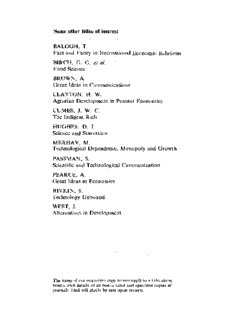
By Bread Alone
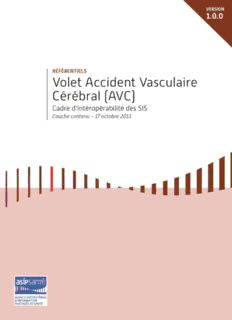
Volet Accident Vasculaire Cérébral (AVC)

La venganza del Highlander

Alcatel OneTouch Pop 7 User guide
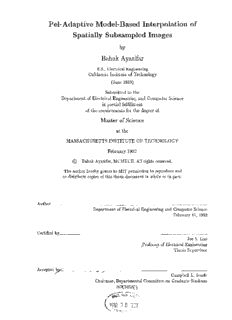
by
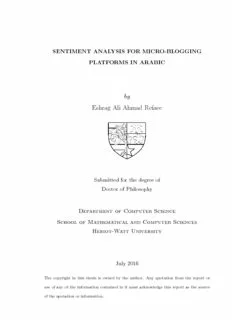
by Eshrag Ali Ahmad Refaee
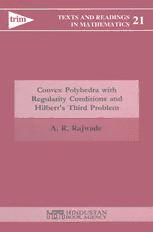
Convex Polyhedra with Regularity Conditions and Hilbert’s Third Problem
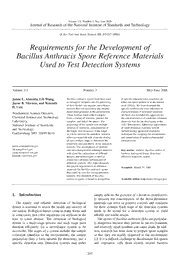
DTIC ADA509405: Requirements for the Development of Bacillus Anthracis Spore Reference Materials Used to Test Detection Systems
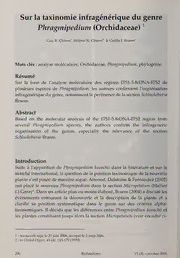
Sur la taxinomie infragénérique du genre Phragmipedium (Orchidaceae)

Explaining Economic Backwardness: Post-1945 Polish Historians on Eastern Europe

Elizabeth City State University Catalog
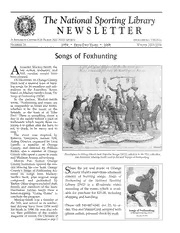
NSLM Newsletter - Winter 2006

ES 4755: GENERAL REQUIREMENTS FOR SAFETY OF LAMP CONTROL GEAR
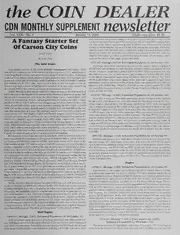
The Coin Dealer Newsletter Monthly Supplement Newsletter: 2006

Hergé, Les aventures de Tintin: Tintin au Tibet

